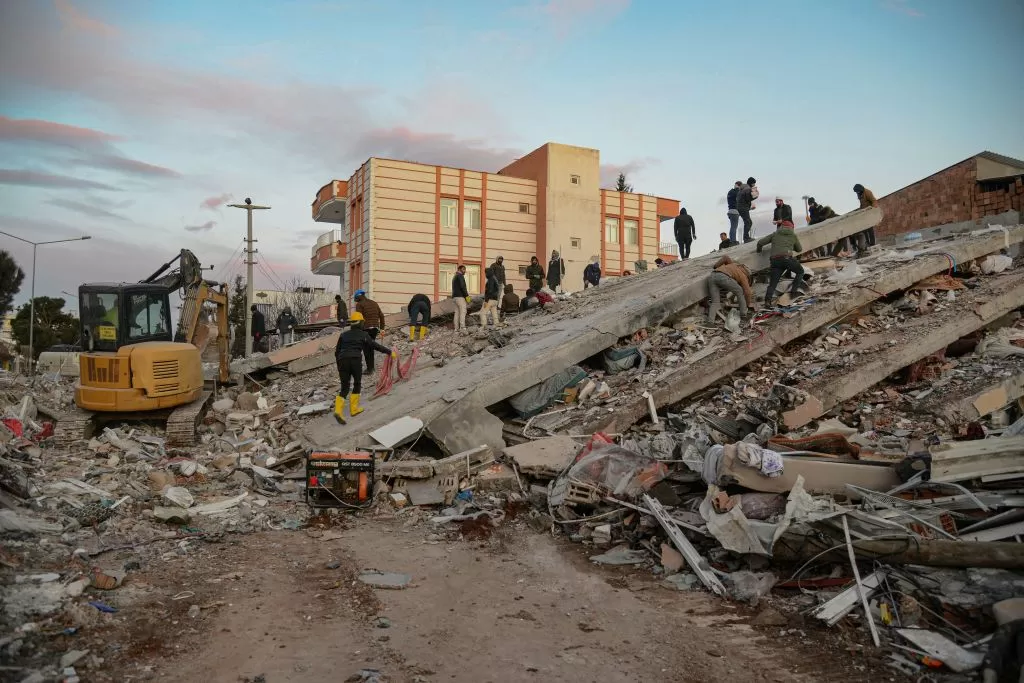AI is Spurring a New Generation of Earthquake Monitoring and Climate Forecasting Systems
Natural disasters like earthquakes and extreme weather events have always been a cause of concern for humanity. The loss of life and damage to property caused by these events is devastating and can take years to recover from. In recent years, with the advancements in technology, scientists and researchers have been able to develop better methods and tools for monitoring and forecasting these disasters. One of the most significant breakthroughs in this field has been the use of Artificial Intelligence (AI). With its ability to analyze and process large amounts of data, AI is spurring a new generation of earthquake monitoring and climate forecasting systems, giving us more accurate and timely information to prepare and respond to these disasters.
Earthquakes are unpredictable, and it is challenging to predict when and where they will occur. Traditional methods of earthquake monitoring involve the use of seismometers, which measure the vibrations of the Earth’s surface. However, these instruments are limited in their ability to predict earthquakes. This is where AI comes in. By analyzing data from multiple sources such as seismometers, GPS sensors, and satellite images, AI algorithms can detect patterns and anomalies that humans may miss. This allows scientists to identify potential earthquake hotspots and give early warning alerts to individuals and communities in high-risk areas. This information can be crucial in saving lives and minimizing damage.
Furthermore, AI helps in creating more accurate earthquake forecasting models. By analyzing data from past earthquakes, AI algorithms can identify patterns and learn from them, making it easier to predict the magnitude and intensity of future earthquakes. This can help in better preparedness and planning for potential disasters.
In addition to earthquake monitoring, AI is also revolutionizing climate forecasting. Climate change has become a pressing issue, and its impacts can be seen in the form of extreme weather events such as hurricanes, floods, and droughts. Traditional weather forecasting methods rely on historical data and mathematical models, which are often inaccurate and cannot account for the complex and non-linear nature of climate. AI, on the other hand, can analyze vast amounts of data from different sources such as satellite images, weather stations, and ocean buoys to make more accurate and detailed predictions. This is particularly crucial for areas prone to natural disasters, as it can help in better preparation and evacuation plans.
Moreover, AI can also help in predicting climate trends and changes in the long term. By analyzing historical data and current trends, AI algorithms can make predictions about the future climate and assist in developing effective climate change mitigation and adaptation strategies.
One of the most significant advantages of using AI in disaster monitoring and forecasting is its speed and accuracy. Traditional methods can take hours or even days to process and analyze data, making it difficult to respond to disasters in a timely manner. AI algorithms, on the other hand, can analyze data in real-time and provide immediate insights, allowing for a faster response to potential disasters. This can save valuable time and resources, which can be crucial in emergency situations.
Furthermore, AI can also help in reducing the cost of disaster monitoring and forecasting. Traditional methods often require expensive equipment and highly trained personnel, making it challenging to implement in all areas. On the other hand, AI systems can work with existing infrastructure, making it more cost-effective and accessible, especially in developing countries where natural disasters often have a devastating impact.
The use of AI in disaster monitoring and forecasting is still in its early stages, and there is still much to be explored and developed. However, the potential of this technology in improving our understanding and response to natural disasters is immense. With the increase in computing power and data availability, the capabilities of AI will only continue to grow, and we can expect to see even more advanced systems in the future.
In conclusion, the use of AI in earthquake monitoring and climate forecasting is a game-changer. It has the potential to save lives, reduce damage, and improve our understanding of these natural disasters. As we continue to witness the devastating effects of climate change and unpredictable earthquakes, the need for advanced and accurate monitoring and forecasting systems becomes crucial. AI offers a ray of hope in this regard and is set to spur a new generation of disaster management techniques, making our world a safer place to live in.


